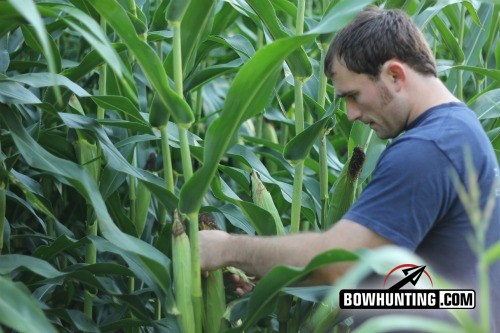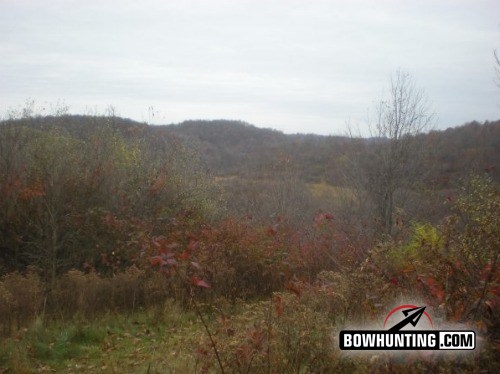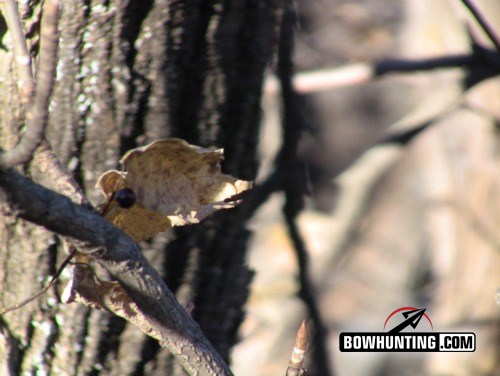LAST UPDATED: May 8th, 2015
Calls made to simulate deer crunching on acorns. Scents that calm jumpy deer. Clothing that mysteriously absorbs our odor. Strategies for hunting mature deer on certain moon patterns, analysis of barometric pressure shifts and rut predictions based on the time of the month, full moons and how long Justin Bieber’s hair is. Just reading through this hurts my head, and this is just a bite size sampling of the endless deer hunting tools, tricks and strategies that are showered upon us via TV, magazines, books and the internet! Now I’m just as guilty as the next person when it comes to getting obsessed with the next big thing, but at the same time it’s easy for this obsession with the new fangled to distract from the basic tenants of deer hunting. Given our typical deer hunting gear/tips/tricks overload, I thought we’d take it back to basics today. If you strip out all of the fancy schmancy terms, toys and strategies….what does it take to be a succesful deer hunter, in the most simple form?
In a few words? Understanding food, cover and wind direction. If you take any new fangled strategy or piece of gear, in one way or another it relates back to one of these three core ideas. So lets take a look at each of these cornerstones of deer hunting success.
Food: It is said that a deer’s life revolves around his stomach, and this is certainly true. No matter what time of year it is, your strategy will in someway be effected by the current food source. During the early season, you can often pattern bucks hitting specific food sources and hunt those. While during the rut, bucks may not be patternable, but knowing where doe groups are feeding will help you encounter more bucks. As a rule, always work to better understand what food sources deer are using at different times throughout the year. Having this information will always help you make smart decisions. I know this is basic, but take a second to really think this through for your given hunting situation. Based on local conditions, are you confident that you know what the most palatable food source will be come opening day? Are you aware of the current acorn situation on trees on your property or nearby? Is there any kind of food that will hold deer in your area come late season? Understanding these types of questions and the like will help you better understand this cornerstone of deer hunting success, and must be considered in earnest.
Cover: If deer aren’t feeding, they are bedded in cover or heading there. Cover is a deer’s home, his protection and the true center of his universe. Without it, a property can’t consistently hold deer and without a solid understanding of how deer use cover, you’ll never consistently kill deer. Find good cover, understand what deer are using it, and figure out how they are entering and exiting it. If you’ve got this down pat, and you understand the food sources nearby you’re in a great position to put a tag on. Take a second and really think about the available cover on your properties. Hunting the rut? Do you know how bucks will be cruising to check those cover areas for hot does? Do you even feel comfortable determing what good cover is and why deer use it? These are the kinds of questions you need to ask yourself and work to understand. Do that and the equation is nearly complete…
Wind: Once you’ve got a firm grasp on where deer are feeding and where they are bedding you can then work on hunting them! And the major factor in determining where and when you can hunt will be wind direction. Of all the deers’ amazing senses, none is as strong as it’s sense of smell. Get a strong understanding of the key food and cover for the given time of year and then wait for the wind that is in your favor. Fully wrapping your head around how deer use wind and how you can best use it to your advantage are the final pieces to the deer hunting puzzle. Wind effects how and where deer feed, as well as what cover they use. So with wind we truly come full circle. A few items to consider…Mature bucks often will enter food sources that allow them to move into the wind, during the rut bucks will often cruise downwind of bedding areas, elevation changes can create wind patterns themselves due to thermal changes. Obviously the topics related to wind direction are many, but explore this topic as much as possible, and at the very least, always be aware of wind direction and where your scent is traveling.
If you can clear your mental hard drive of all the crazy deer hunting things you’ve read and heard over the years and focus on just really truly understanding food, cover and wind, I promise you’ll see positive results. This year get back to the basics of deer hunting and then get that buck on the wall!








